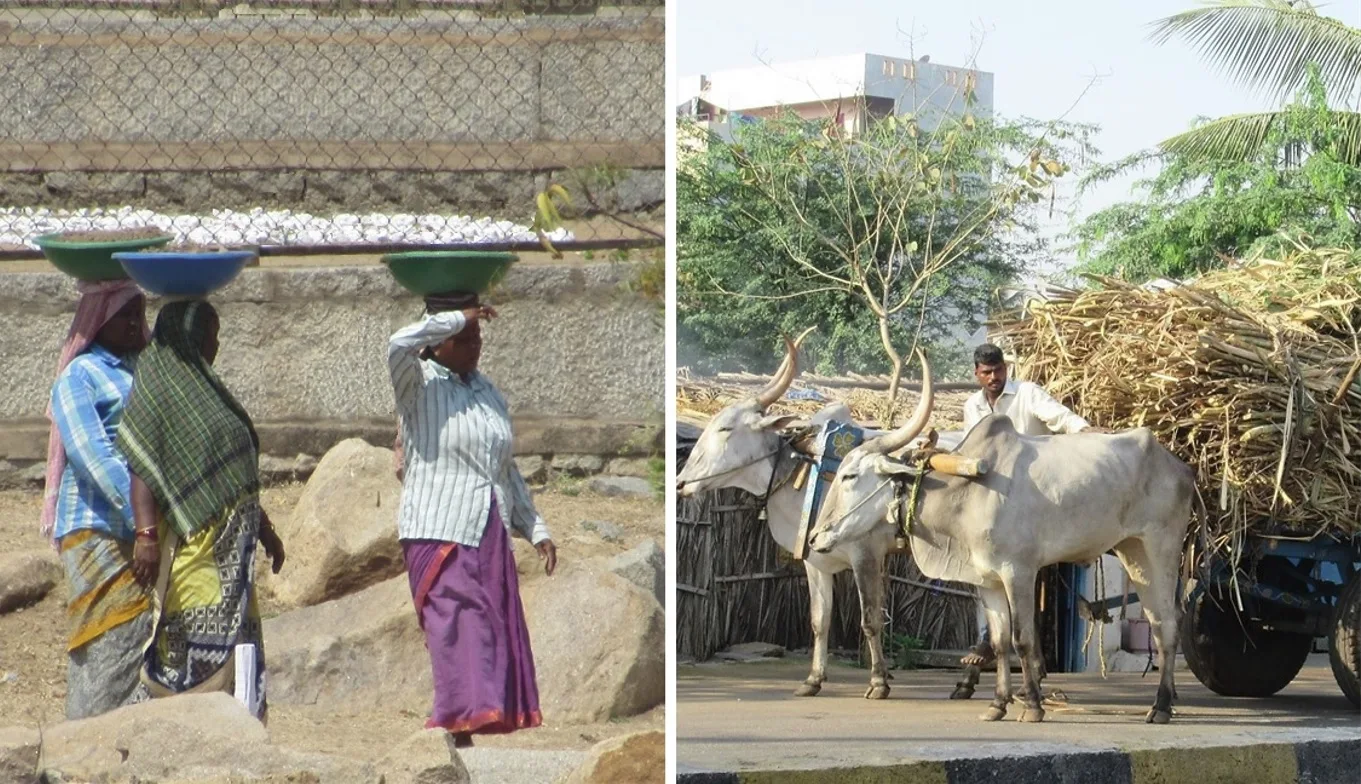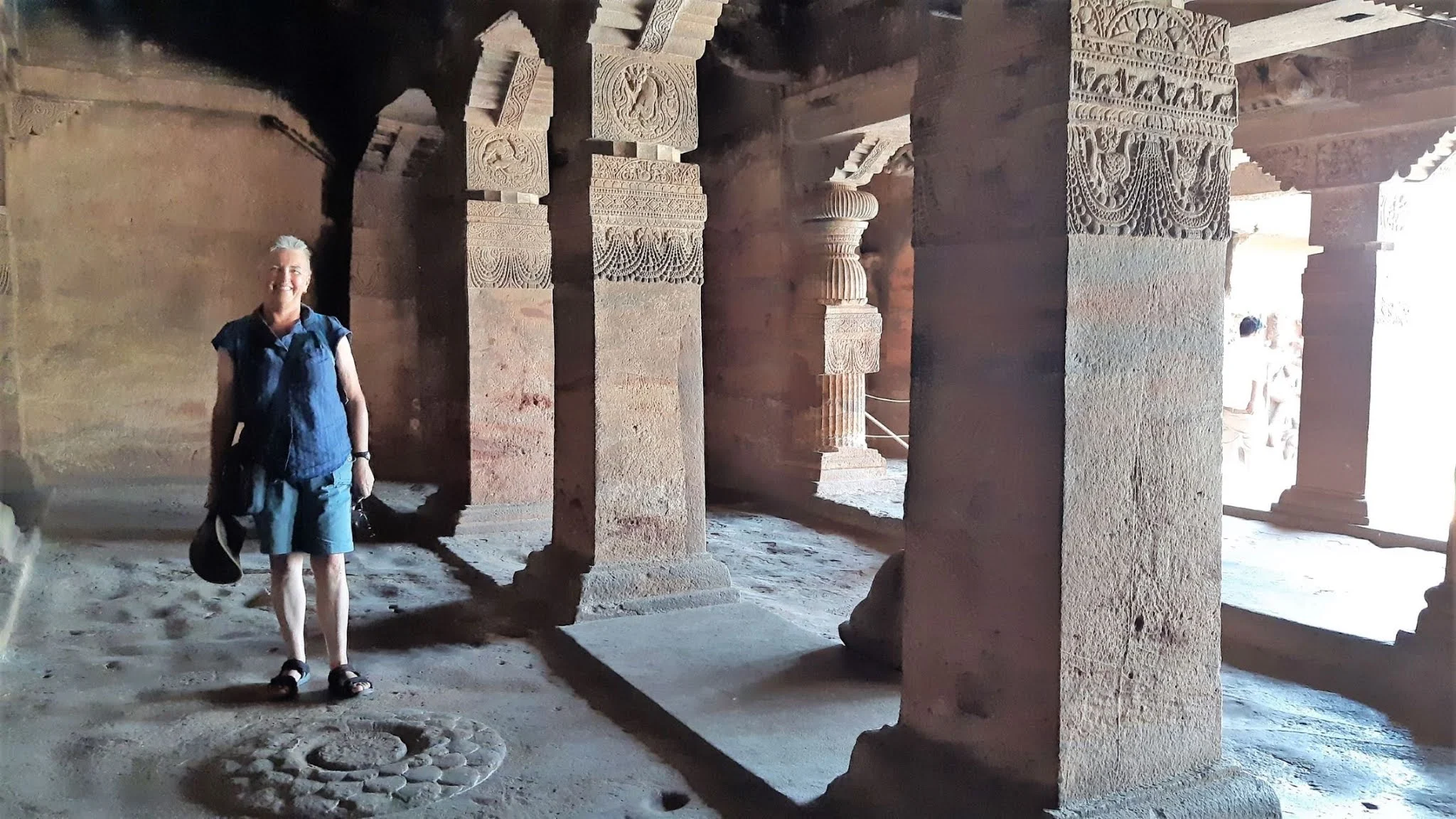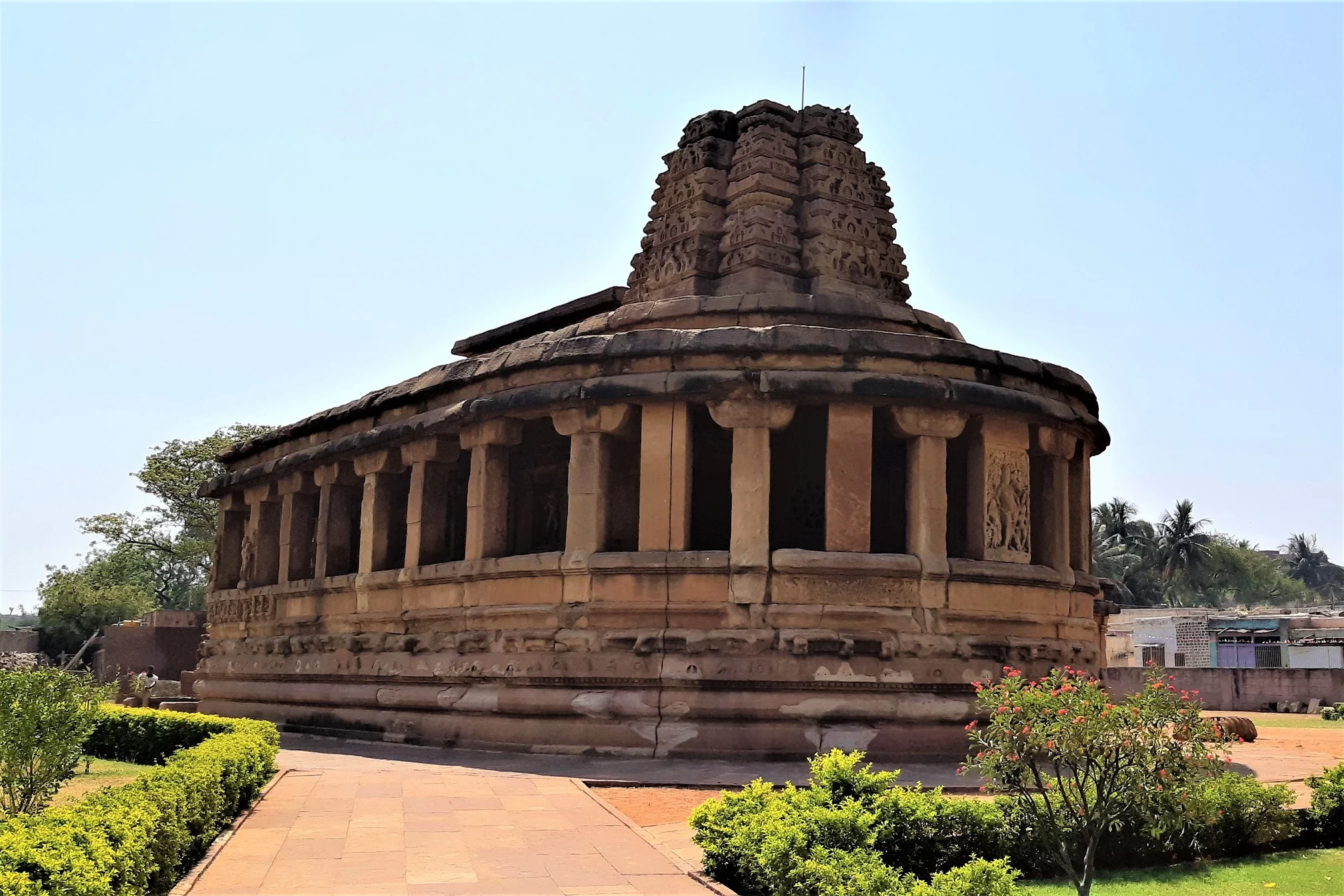Over the last few weeks, we've travelled from Delhi to India's far north-east, then down her eastern coast, and up her western coast to Goa. From there, we caught a train to Hosapete, deep in the heartlands of Southern India. We were going to visit some remote UNESCO sites near there.
 |
| Brahma bulls seen from train to Hosapete |
We settled in for the 7-hour train ride, which passed through or stopped, at many tiny agricultural villages. The scenery was varied, there was all sorts of livestock around, and people were busy at what they do. It was so interesting.
At one of the station stops, a young Indian medical
student joined our carriage. We were soon chatting with her about many subjects, including medicine, culture, New Zealand's Christchurch Mosque disaster (which has been in the news here), and India’s place in the world.
 |
| Daily activities as seen from train to Hosapete |
As a 19-year-old, she saw herself as an
independent woman, which meant travelling alone by overnight train to university, against here family's advice.
She said her fate was to marry and have children, even though she did not want kids. In her words: "that’s
India for you!".
 |
| Hosapete Junction Station where we got off the train |
As we neared Hosapete Station, a man leaped onto the moving train, landing right where we were waiting to get off. We learned that he was a tuktuk driver randomly looking for passengers, so we hired him to take us to our accommodation.
We were at Hotel Malligi Hosapete. It had clean rooms, a lovely garden, nice staff and a
great restaurant.
Our tuktuk man said he could get us an
air-conditioned taxi for day trips – it’s all about your family connections here, and as always, there is a commission involved…... but just how they work out their commission
is still a mystery to us!
Our destination was Hampi, a collection of monuments in Karnataka State, that is a UNESCO World Heritage Site. We wanted to see the ancient buildings, in particular, the Virupaksha Temple which is one of the oldest. It was built in 740 AD then modified during the Vijayanagar rule.
Most of the Hampi monuments were constructed during the Vijayanagara rule between 1336 and 1770 CE, and it became their capital and one of the greatest Hindu kingdoms in India’s history.
After a long period of prosperity, Hampi was conquered and destroyed in 1565 after which it remained in ruins.
 |
| Top (L to R): Lotus Mahal and Elephant Stable. Below: Stone Chariot and Kalyana Pavilion, Hampi (UNESCO) |
The ruins cover 41.5 sq kms (16 sq mi), with over 1,600 structures including forts, royal pavilions, temples, shrines and more, all carved out of stone.
A few of the highlights for us were the simple Lotus Mahal, amazing Elephant Stable with its 11 very large interconnected domes, the intricately carved stone chariot, and beautiful Kalyana Pavilion of the Vitthala Temple.
The Vitthala Temple has
several pavilions, each with beautifully carved granite pillars. The pavilions were apparently used for weddings
and other celebrations.
We walked around the huge site seeing as many temples and ancient structures as we could manage, and really enjoyed it, notwithstanding the
mid-30 degree Celsius temperature. We were glad to have an air-conditioned taxi to
take us between the various ruin sites, so we could cool off a little before
going out into the heat again.
The next day we took the same taxi to see three other amazing sites. The first was Aihole, about 3 hours north of Hosapete. Aihole is a major archaeological site consisting of around 120 Buddhist, Hindu and Jain stone and cave temples. They were built from the 6th to 12th centuries, although most of the remaining ruins here now are from the 7th to 10th centuries.
It's not as extensive as Hampi, so after a short time, the extreme heat encouraged us to get back into our air-conditioned taxi and move on.
We then drove about 60 minutes west to the
Pattadakal Group of Monuments that, like Hampi, is a UNESCO World Heritage
Site.
Pattadakal was at the heart of the Chalukya
Empire. It is a complex of 4th to 8th century Hindu and Jain temples. Here we saw more beautiful, stone-carved buildings. We were amazed at their large size, and in awe
of the skills that would have been used in their construction and artwork so
long ago.
Pattadakal's Virupaksha temple is an active house of Hindu worship, and while we were there, we happened upon a religious event that was being held.
We were very careful not to interrupt, but felt privileged to see it, and found it very interesting.
According to what we read about the area,
this group of temples is considered the “cradle of temple architecture that
formed the model for later Hindu temples in the region”.
The caves are carved into a hill. There was some shade on the way up the many
steps to the caves, so we managed to survive the climb without getting too hot.
We also had to avoid the many lurking monkeys.
Each caves contain some incredible carvings that have survived the passage of time, to still look stunning today.
 |
| Amazing carvings in the rock caves at Badami |
After a long day viewing so many amazing sights in the heat, we were glad to reach the town of Hubli where we were staying overnight. We were there because Hubli has the only airport around the area, and we wanted to fly to Mumbai the next day.
We had an interesting experience when checking in to our hotel at Hubli. The receptionist tried to tell us that we owed money, despite having a voucher saying everything was paid online in advance of our visit. He then said he would upgrade our room at no extra cost, but that the money we owed would have to be paid in cash - to him - not to the online booking agency.
 |
| Marg inside Cave 1 at Badami |
We did not accept the additional charges because we could see that he just wanted to get some cash out of us. So, after speaking nicely to him, and trying to talk our way out of a tricky situation without success, we sought help from the agency that we booked the room through.
In the end, we didn’t pay any extra, and the little chappie who tried to rip us off was very subdued in the morning. A wee downer after a great tour of the area.
But it was all good, as we were
headed to Mumbai (aka Bombay), our next destination and were really looking forward to it.
The above blog is part of our 2-month tour of India. The first blog on this tour is called “Off to Delhi".





